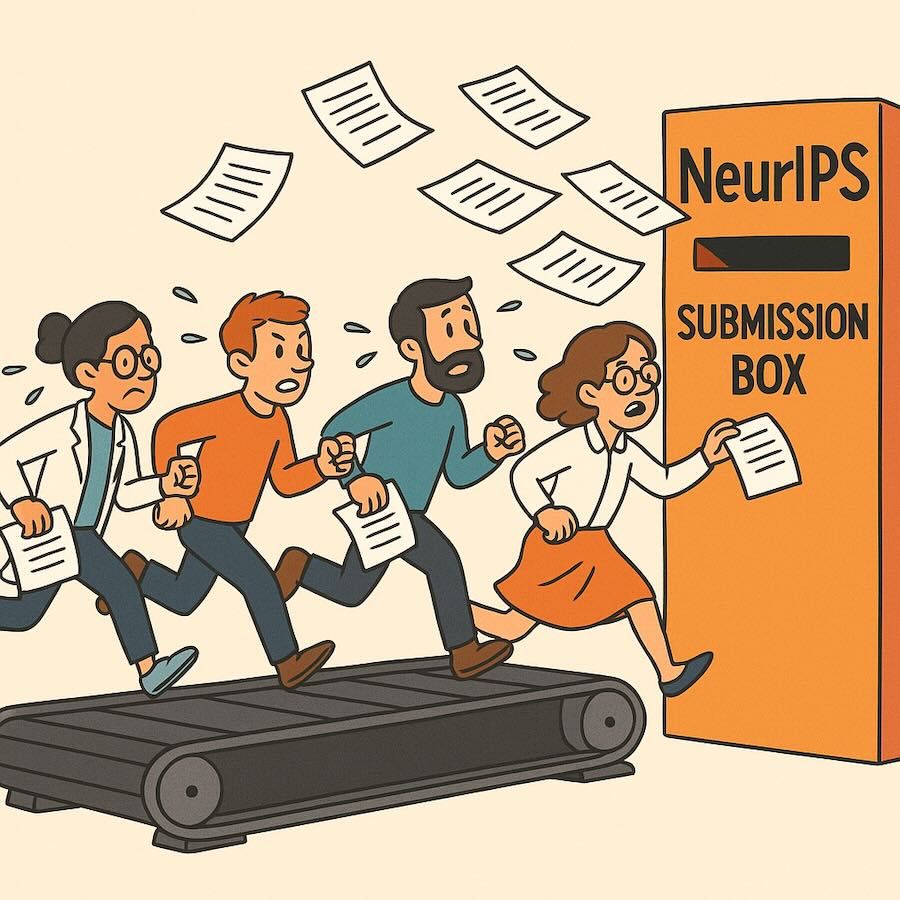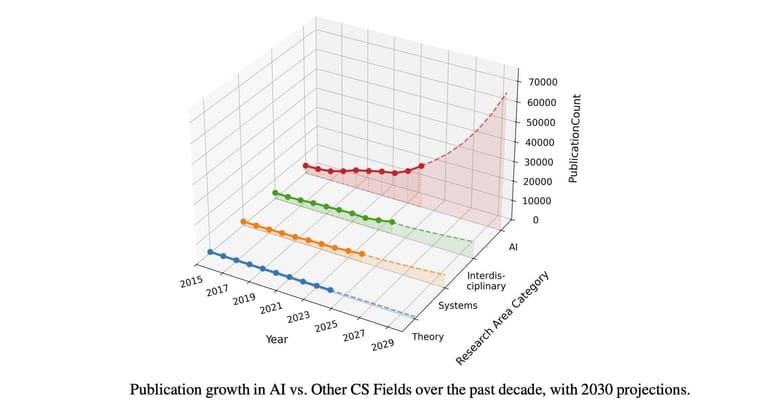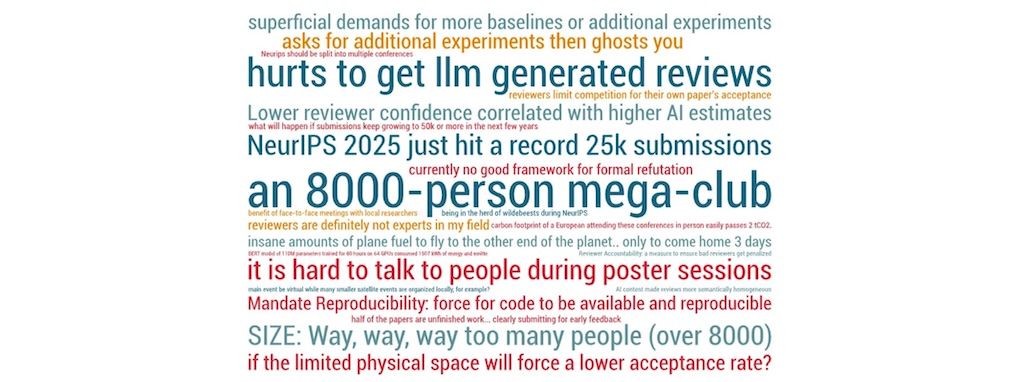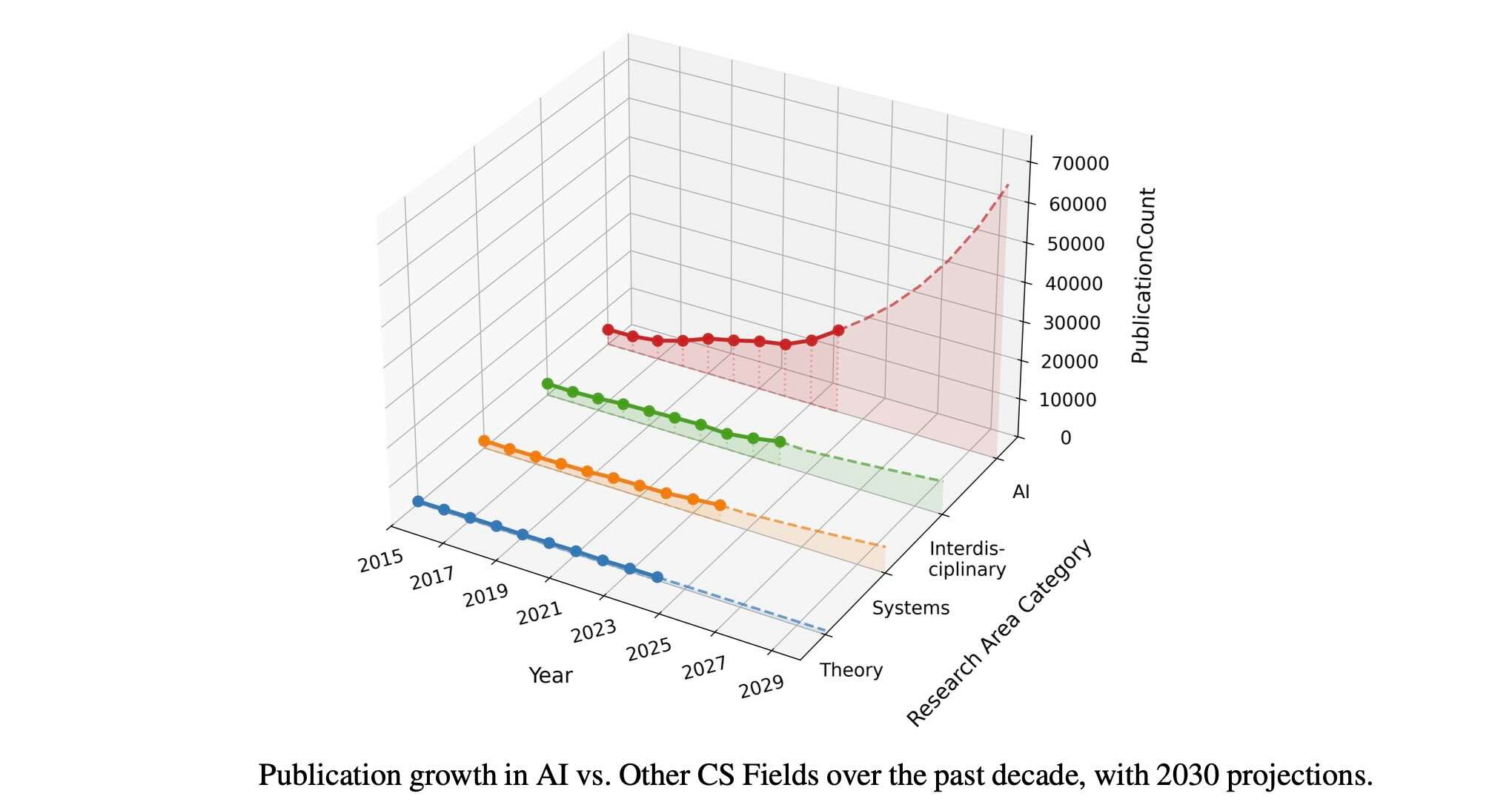🚨 The AI Conference Bubble is About to Burst: "Publish or Perish" at the Edge of Collapse
-

The Illusion of Glory

AI’s explosive growth has brought undeniable excitement. NeurIPS, ICML, ICLR, CVPR; these once-intimate conferences have grown into academic mega-festivals. But behind the glamour hides a darker reality: our current conference model is cracking under its own weight.
A recent position paper by researchers from the National University of Singapore doesn’t mince words:
 “The current AI conference model is unsustainable.”
“The current AI conference model is unsustainable.”And when two separate reports from Chinese media dubbed the situation “AI顶会反噬学界” (AI top conferences are backfiring on academia), you know the alarm bells are ringing.

The Numbers Don’t Lie

- Publication overload: In the last decade, the average number of papers per researcher has doubled, now surpassing 4.5 per year. If trends continue, by 2040, one researcher will need to publish a paper a month just to keep up.
- Reviewer burnout: Submissions are skyrocketing: NeurIPS alone hit 25,000 submissions in 2025, while the reviewer pool has barely expanded. The result? Hasty reviews, “Who’s Adam?” scandals, and trust erosion.
- Mental health crisis: In an analysis of 405 Reddit threads, over 71% were negative in tone. Words like “anxiety,” “burnout,” “collapse” dominated.
- Environmental disaster: Just the air travel for first authors of NeurIPS 2024 emitted 8,254 tons of CO₂, equivalent to the entire daily footprint of Vancouver’s 680,000 residents.
- Venue limits: NeurIPS 2024’s venue hit its 18,000-person capacity. Entry became literally a lottery
 ️.
️.
This isn’t “academic vibrancy.” It’s academic overproduction, a treadmill where the motto is: Publish or perish. Or both.

Stentence cloud of community grievances from online discussions (adapted from https://papers-pdfs.assets.alphaxiv.org/2508.04586v1.pdf)The Human Cost 🧠

The human side of this crisis is even more alarming. Researchers aren’t chasing discovery — they’re chasing acceptance rates. Risky, long-term work? Sidelined. Novel ideas? Delayed until “safe” enough.
PhD students in particular are crushed by this treadmill. As one report puts it: “PhD students grind out 4.5 papers a year! total collapse!” — PhD students are burning out to hit 4.5 papers a year .
The result? A community where innovation is stifled, anxiety is normalized, and peer review itself, the bedrock of science, is eroding.
Beyond Patchwork Fixes 🩹
Conference organizers have tried to patch the system:
- Capping submissions per author,
- Adding satellite venues (Mexico City, Copenhagen),
- Hybrid formats…
But these are band-aids on a structural wound. The submission/review cycle is still synchronized and centralized, meaning review pressure and author anxiety only intensify .
Rel. Metric / Indicator Key Finding Challenge Community-Federated Conference (CFC) Solution  🟧
🟧Per-author publication rate The average annual publication rate in the AI field exceeds 4.5 papers, doubling in ten years, leading to a focus on quantity over quality. Hyper-competition, SOTA hacking, or incremental contributions without conceptual depth. Add submission windows to improve manuscript quality through rolling acceptance. 


Faculty average contribution The average contribution exceeds exponentially, projected to exceed one paper per month by the 2040s. Meaningful exchanges are diminished by fostering a high-pressure environment. Decoupling submission alleviates deadline pressure and encourages deeper, more thoughtful research. 

Carbon footprint & Travel barriers NeurIPS 2024’s travel emissions alone (>8,254 tCO₂e) exceed the daily emissions of the city of Vancouver. Environmentally unsustainable, and create economic and visa barriers that undermine equity. More than 90% of attendees come from regional hubs in the region, significantly reducing emissions, travel, and costs. 


Online negativity & Mental health strain Of the 405 threads on the reddit, >71% of conference-related posts are negative, and 35% contain mental health keywords. High-pressure environments erode community trust and inhibit innovative risk-taking. Regional hubs of 50-200 people foster stronger peer connections and a sense of belonging.  🟧
🟧Conference Statistics & Research lifecycle lag Rejections grow exponentially, while the AI research lifecycle outpaces conference cycles, often rendering results outdated before presentation. Resubmission strains reviewer capacity. Knowledge exchange is delayed and stale. Rolling peer review cycles and multiple lightweight hubs enable more frequent dissemination of results.  🟧
🟧
Venue capacity bottleneck Attendance at top AI conferences, exemplified by NeurIPS 2024, is beginning to outpace venue capacity. Exclusivity (inability to accommodate everyone) reduces the effectiveness of knowledge dissemination and community building. Federated hubs, combined with a strong digital layer, ensure broad and equitable participation regardless of physical capacity. Table adapted from paper. Overview of conference challenges and solutions, illustrating the many-to-many relationship between issues and core goals:
 Scientific Advancement, 🟧 Knowledge Dissemination,
Scientific Advancement, 🟧 Knowledge Dissemination,  Community Building,
Community Building,  Social Contract: DEI.
Social Contract: DEI.A New Vision: Community-Federated Conferences


The NUS researchers propose something radical: the Community-Federated Conference (CFC) model.
-
Layer 1: Global Review & Publication Hub
Year-round, rolling submissions. Papers get reviewed continuously on a global platform (think AAAI/ACM digital-first). No more submission cliffs, no more “reviewer purgatory.” -
Layer 2: Regional Hubs
Smaller in-person gatherings (500–1500 people), hosted by universities or labs, spread across continents. This reduces travel emissions, lowers costs, and makes participation more inclusive. -
Layer 3: Digital Backbone
A global digital layer ties everything together: plenary talks broadcast to all hubs, permanent poster halls, Slack/Discord rooms bridging continents.
In short: global standards, local execution.
Less carbon, less stress, more equity, more science.
Where Do We Go From Here?

The crisis is real. The treadmill is unsustainable. But the solution won’t come from passive complaints on Reddit. It requires a rethinking of what a conference is for: not a status contest, but a knowledge commons.
That’s why tools like CS Paper Review matter. They help decentralize feedback, improve review quality, and restore what conferences were meant to be: places where ideas are challenged, nurtured, and celebrated.
So next time you’re stuck in the “rebuttal cycle,” ask yourself: Is this the best we can do? Or is it time to build something new?

 Let’s not wait for NeurIPS 2040, when we’ll need to publish a paper every month.
Let’s not wait for NeurIPS 2040, when we’ll need to publish a paper every month.
Instead, let’s fix the system before it breaks us.

